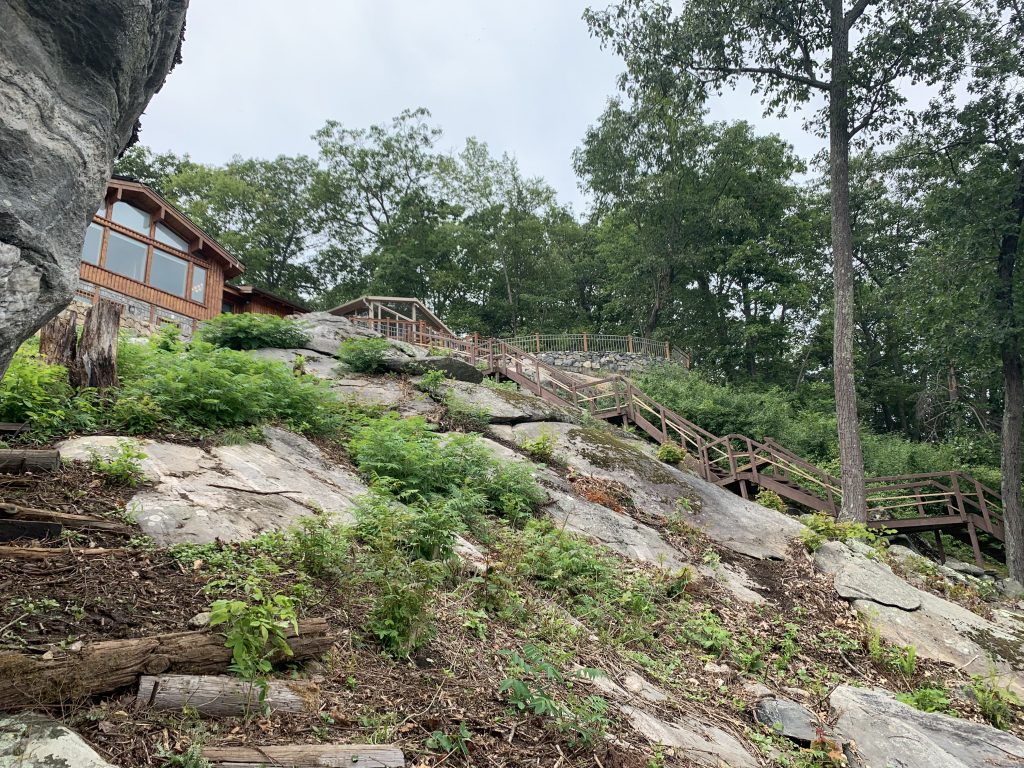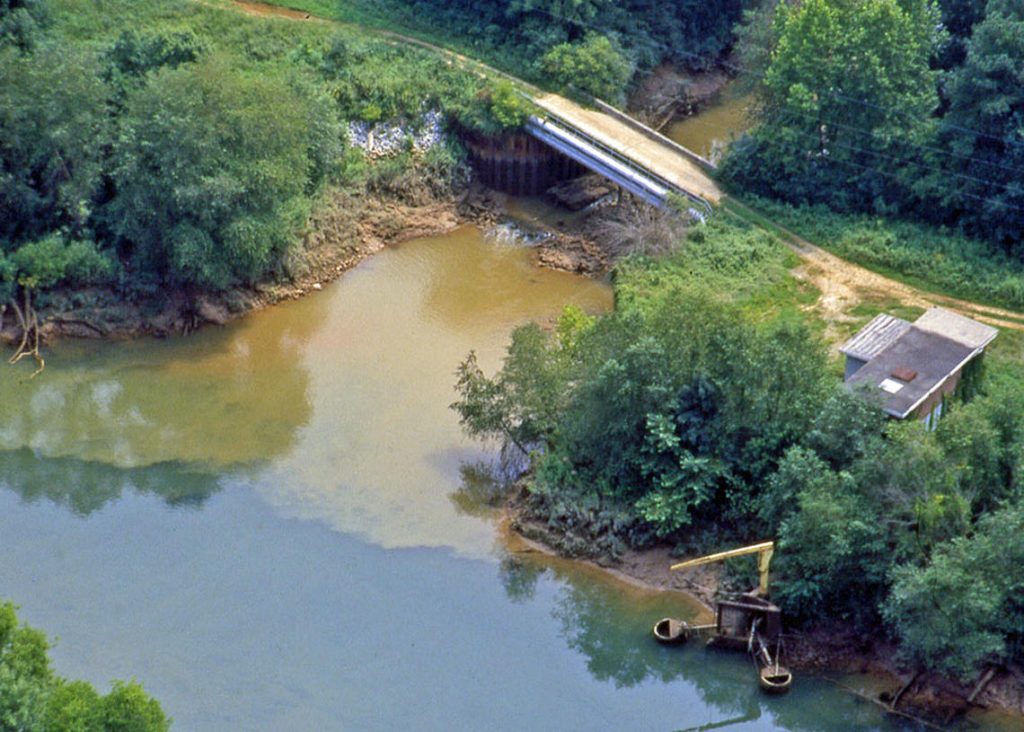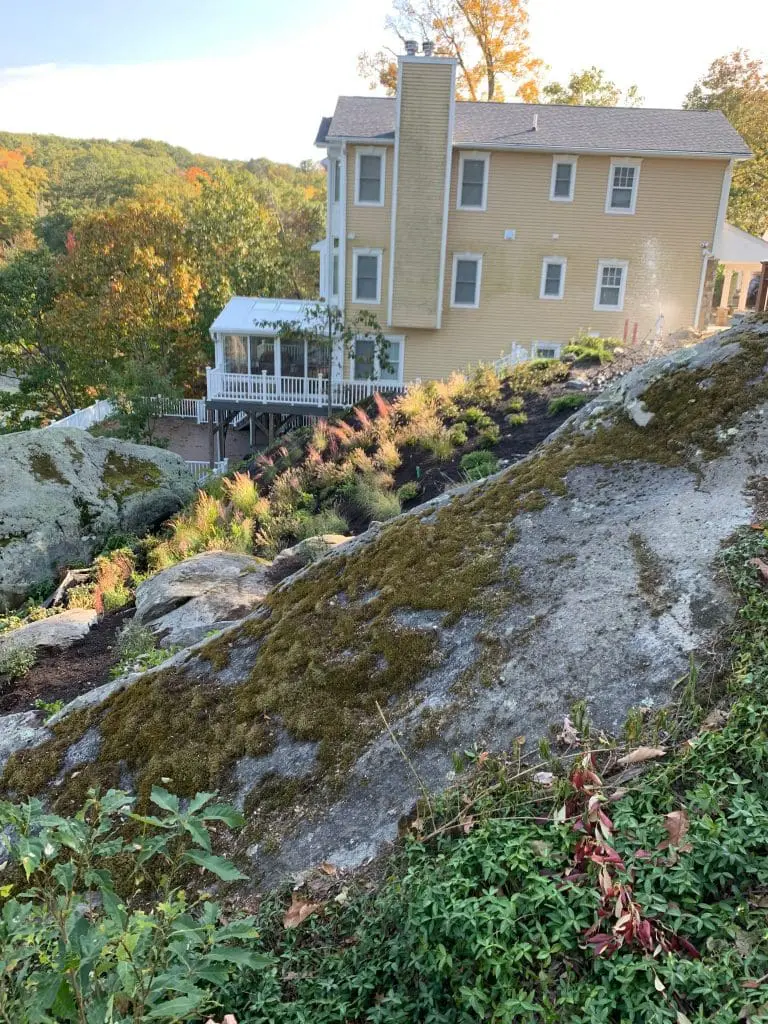What a uniquely beautiful site this Holmes, NY property is: lakefront, with an extremely steep hillside directly behind the house leading to the water. The slope is highly visible from the lake—the front of the house, from the boaters’ perspective—so we knew we had to elevate the landscape’s beauty and color. Hillside stabilization, preventing erosion and preserving the soil were essential ecological design criteria.


Soil in Crisis
Erosion is surely an overlooked environmental concern. Soil is one of our most precious resources, upon which humanity’s existence depends. Disconcertingly, it is not very renewable: it takes between 100 and 500 years to create one inch of topsoil (depending on climate and site conditions).

It is estimated that in the US we are losing about 1% of our topsoil each year, largely due to industrial agriculture practices. One estimate reveals that 6 pounds of farmable soil are lost per every 1 pound of food eaten in the US. Our annual soil depletion rate is 18 times faster than the natural soil formation rate.

Impact of Erosion
Erosion issues are especially poignant near waterways and waterbodies, like this lake in Holmes, NY. Sediment is listed by the EPA as the most common pollutant in waterbodies; furthermore, anthropogenic land use accelerates the erosion rate and accounts for 70% of sediment in waterways.

Sediment in waterbodies poses a number of ecological problems including:
- Resulting cloudiness in the water inhibits natural aquatic vegetation growth
- Makes food harder to see and find for aquatic organisms and disrupts the foundation of the food chain, resulting in fish kills
- Nutrients transported by soils can induce algal blooms, depleting oxygen in the water making it uninhabitable for many organisms and human recreation.
- Sediment loading can alter the depth of rivers and lakes, impacting aquatic organisms and human recreation activities
- These soil particles can clog fish gills, affecting growth and development
- Sediment clogs storm drains and catch basins often leading to flooding
- Often leads to expensive water treatment procedures to make water potable again
Designing on a Steep Hillside

The design intent was clear; as Jay wrote in the Landscape Design Proposal:
We intend to create and construct a naturally beautiful hilltop landscape featuring low growing flowering native shrubs and grasses composed to convey peaceful tranquility. Your garden landscape will attract beneficial wildlife, birds and butterflies while providing enduring and sustainable stability to your lakeside retreat.
The scope of work included a vegetative removal phase, the installation of erosion control devices, and of course a strategic planting of mostly-native perennials, shrubs and grasses.

This will be achieved by manual and mechanical removal of unwanted vegetation (i.e. Sumac) to allow for elevating and contouring the grade by the addition of structural soil, engineered fill, natural boulders, erosion control devices (blanket netting) and planting with appropriate and attractive plant material for resilience and sustainabilisty (manageable maintenance).
Erosion blankets / netting cover the soil and are planted into, allowing the soil to be physically held in place while the plants root systems develop. Eventually the roots will work naturally to hold soil and the erosion blanket will biodegrade.

Lower rock face escarpment to be denuded, where necessary, by removal of vegetative root mats, with the exception of proximity to existing trees that would be compromised.

Picking Plants for a Steep Slope
This planting palette included ornamental grasses, which have deep root systems that are ideal for stabilizing sloped topography and look fabulous in the wind and full-sun, of which the site is abundant in.
Of course the mostly-native plant pallets will provide pollen and nectar sources for pollinators from spring-fall and nectar, seeds and berries for birds throughout the fall and winter months. Undoubtedly this project qualifies as a Pollinator Pathway site and fulfills criteria for Healthy Yards.

Hillside Garden Plants selected included:
Northern Sea Oats – this beautiful native grass is a favorite of birds including finches, native sparrows, juncos, and doves for both food (seedheads) and nesting materials. It is also the larval host plant for butterflies Pepper-and-salt Skipper, Bell’s Roadside-Skipper and Bronze Roadside-Skipper.

Fountain Grass – A non-native grass that still provides fall/winter food in the form of seeds, and winter cover.
Switchgrass – Another native grass favorite, Switchgrass comes in beautiful cultivars like ‘Shenandoa’ and ‘Heavy Metal’. Songbirds feed on the seedbeds and the groups of the tall grass creates viable nesting sites as well.
Clethra – Summer-blooming native shrub that attracts native bees, butterflies, hummingbirds and more. It has a delicious sweet fragrance as well!

Blueberry – A permaculture superstar, blueberries are native shrubs that produce food for humans, birds and wildlife alike.
Fothergilla – a flowering shrub native to lowland and bog areas in the Eastern US. The beautiful spring-flowering, bottle-brush like flowers attract native bees and butterflies.

We can’t wait to see this garden fill in and develop. So far the erosion control measures are working and withstanding the week of rain we’ve had.
Contact us to discuss your erosion or stormwater management project.